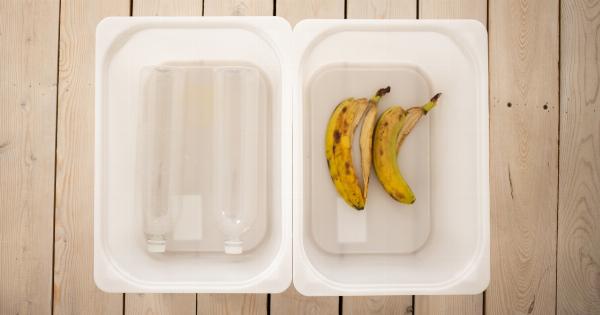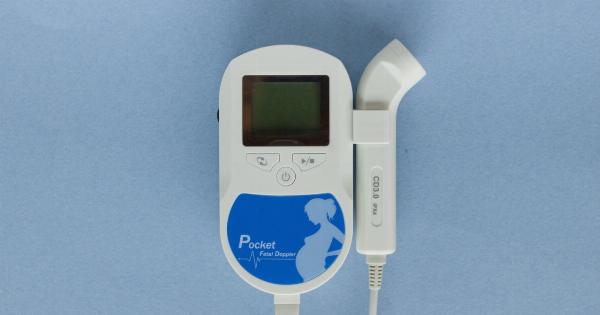Orthostatic hypotension, also known as postural hypotension, is a medical condition characterized by a sudden drop in blood pressure when a person stands up from a sitting or lying position.
This drop in blood pressure can lead to symptoms such as dizziness, lightheadedness, and even fainting. Orthostatic hypotension can be caused by various factors, both physiological and pathological. In this article, we will discuss the top 10 causes of orthostatic hypotension.
1. Dehydration
One of the most common causes of orthostatic hypotension is dehydration. When the body is dehydrated, there is a lower volume of blood available, which can result in a sudden drop in blood pressure upon standing up.
Dehydration can occur due to various reasons, including inadequate fluid intake, excessive sweating, vomiting, or diarrhea. It is essential to stay hydrated by drinking plenty of fluids throughout the day to prevent orthostatic hypotension.
2. Medications
Another significant cause of orthostatic hypotension is certain medications. Many drugs, especially those used to treat high blood pressure, can cause a drop in blood pressure when a person changes positions.
These medications may include alpha blockers, beta blockers, diuretics, ACE inhibitors, and calcium channel blockers. If you are taking any of these medications and experiencing symptoms of orthostatic hypotension, it is crucial to consult with your healthcare provider.
3. Aging
As we age, our bodies undergo natural changes that can affect blood pressure regulation. The autonomic nervous system, responsible for maintaining blood pressure, can become less effective with age.
This can lead to an increased risk of orthostatic hypotension in older adults. Additionally, age-related conditions such as atherosclerosis (hardening of the arteries) can contribute to orthostatic hypotension.
4. Nervous System Disorders
Damage or dysfunction in the autonomic nervous system can significantly contribute to orthostatic hypotension.
Conditions such as Parkinson’s disease, multiple system atrophy, and certain neuropathies can disrupt the normal functioning of the autonomic nervous system, leading to a drop in blood pressure upon standing. These neurological disorders can affect the nerves responsible for controlling blood vessel constriction and heart rate.
5. Diabetes
Individuals with diabetes are at an increased risk of developing orthostatic hypotension. Diabetes can damage the nerves that regulate blood pressure, leading to dysregulation of blood vessel constriction and heart rate.
Furthermore, the effects of diabetes on the kidneys can contribute to dehydration, another significant cause of orthostatic hypotension.
6. Prolonged Bed Rest
Extended periods of bed rest or immobilization can cause orthostatic hypotension. When a person remains in a lying or sitting position for an extended period, their body can adapt to the lower workload and reduced blood flow.
As a result, when they stand up, there is a delay in the appropriate adjustment of blood vessel tone, leading to a sudden drop in blood pressure.
7. Anemia
Anemia, a condition characterized by a low red blood cell count or inadequate hemoglobin, can contribute to orthostatic hypotension. Red blood cells and hemoglobin carry oxygen to vital organs and tissues, including the brain.
When there is a decrease in the amount of oxygen reaching the brain due to anemia, it can result in dizziness and lightheadedness upon standing.
8. Heart Conditions
Certain heart conditions can lead to orthostatic hypotension. Conditions such as heart failure, heart valve problems, and arrhythmias can affect the heart’s ability to pump blood effectively.
As a result, there may be inadequate blood flow to the brain when a person changes positions, leading to symptoms of orthostatic hypotension.
9. Autoimmune Disorders
Some autoimmune disorders, such as lupus and Sjogren’s syndrome, can cause orthostatic hypotension. These conditions can affect various bodily systems, including the autonomic nervous system.
The autoimmune attack on the autonomic nerves can disrupt their normal function, leading to blood pressure dysregulation.
10. Nutritional Deficiencies
Inadequate intake of certain nutrients can contribute to orthostatic hypotension. For example, a deficiency in vitamin B12 or folate can affect red blood cell production and lead to anemia, increasing the risk of orthostatic hypotension.
Similarly, low levels of sodium or electrolyte imbalances can affect blood volume and pressure regulation.
In conclusion, orthostatic hypotension can have various causes, including dehydration, certain medications, aging, nervous system disorders, diabetes, prolonged bed rest, anemia, heart conditions, autoimmune disorders, and nutritional deficiencies.
Understanding the underlying causes can help in the management and treatment of orthostatic hypotension. If you experience symptoms of orthostatic hypotension, it is essential to consult with a healthcare professional for proper evaluation and medical guidance.





























